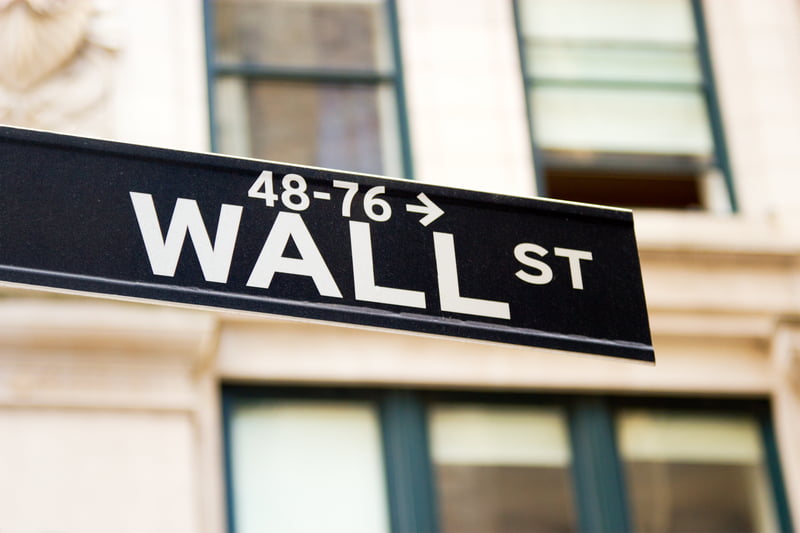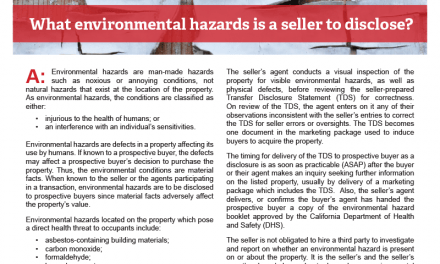Another walk down Wall Street
Without Wall Street, we may as well shrivel up and die. The real estate market would collapse. Wealth would be liquidated wholesale, only to land in the hands of some third- world dictator who will use it for pure evil.
So say Wall Street’s apologists. According to the incurious protectorate of the status quo, Wall Street is absolutely essential to the health and growth of not just our financial markets, but our real estate market.
Related articles:
New York Times: What does Wall Street Do for You?
We tend to forget our history.
As we approach the five-year anniversary of the financial crisis, one begins to wonder where we fall on the continuum of forgetfulness. Is it too soon to take stock? Are the wounds still too fresh to remove the bandages and take a long look at the scars?
Or is it too late? Have we already returned to business as usual? Have we repressed the memory of the Millennium Boom, the financial crisis, the Great Recession and the Lesser Depression?
Now’s the time to take another look at Wall Street’s role in the real estate and mortgage markets. What role did they play during the crisis and how, if at all, has their role changed after the Great Recession?
Foundations for a bubble
In the case of the Millennium Boom and eventual global financial meltdown, the why is actually quite simple.
As in almost every other case of uncontrollable financial acceleration, the boom started with the plain ol’ economic fundamental of demand. The total amount of savings worldwide nearly doubled around the turn of the millennium, leaping from $36 trillion to $70 trillion, according to the International Monetary Fund (IMF). This figure serves as a basis for funds, worldwide, that are available for investment.
Related article:
This American Life: The Giant Pool of Money
Despite the recent bursting of the dot com bubble at the time, as well as the emotional and financial shock of 9/11, both the U.S. and global marketplaces were historically doing very well. The recession of the early 2000s was one of those brilliantly productive recessions, essentially paving the way for the next bubble — real estate.
Interest rates were low in the U.S. (they had been dropping for 30 years), thus rendering investment in U.S. bonds unattractive to both international and domestic investors. All the new global wealth generated by emerging markets such as Brazil and China, coupled with the tech heavyweights that weathered the storm, went looking for a place to invest.
Related article:
Enter Wall Street
It is a common misconception that the housing bubble occurred because of the “new financial technology” of mortgage-backed bonds (MBB). The MBB market, along with its handmaid, Fannie Mae, was created as part of the New Deal to increase lender liquidity and encourage home sales — 70 years ago!
Related video:
Prior to the innovation of MBBs, there were really only two actors in the housing finance scene — the lender and the borrower/buyer. After MBBs, several characters come on the scene, including mortgage warehousers Fannie Mae and Freddie Mac. But the key player that’s introduced into the mix is the investor — actually, lots of them.
In order for the financial alchemy of the secondary mortgage market to work, investors must be located. These investors purchase their share of MBBs, thereby producing an immediate return plus liquidity – cash – for lenders, who then (according to the script) loan those funds to the next borrower/buyer. Historically, this has been Wall Street’s role in the drama of mortgage finance. Locate investors interested in buying MBBs, remove the mortgage from the lender’s books and unleash the productive powers of capital.
These investors have existed since the MBB was invented. MBBs were known for producing a higher return than old-fashioned Treasuries or municipal bonds while still presenting relatively low risk. The home loans were implicitly guaranteed by the government via Fannie and Freddie. Thus, they have always been popular.
However, at the turn of the Millennium, interest in MBBs skyrocketed and Wall Street was having difficulty meeting demand. Fannie and Freddie were not producing for them. Thus, a cornucopia of mortgage products were pushed on the American homebuyer with increasing abandon.
The NINJA loan (no income, no job or assets) was the true financial innovation of the sub-prime mortgage crisis. The truth is, they were created by Wall Street, working in collusion with mortgage loan brokers and plain old, garden-variety real estate agents who looked the other way. Oh, and don’t forget the credit rating agencies — but we tend to lump them in with Wall Street, since those two hands have been washing each other since the beginning of the republic.
The drama unfolds
With crystal clear hindsight we can retell the scenario in perfect high definition. Here’s how it went down:
Wall Street: “Hey mortgage broker, I’ve got investors knocking down my door begging for more MBBs. They love the return and the low risk. Can you originate some more loans so I can sell the interest to these investors?”
Mortgage Broker: “Well, I’m not sure how to sell more loans. Interest rates and incomes are what usually drive demand for mortgage loans, and I can’t do anything to change either of those factors.”
Wall Street: “That’s the beauty of it — you don’t have to. Just take those thousands of people you typically deny financing since they lack the ability to repay, and make the loan anyway.”
Mortgage Broker: “But that goes against every fundamental of money lending we know. They will default!”
Wall Street: “Don’t you see — it doesn’t matter! By then, you will have sold the mortgage to us, and we will have sold it to investors! Demand is so high for MBBs, this all happens instantaneously, as soon as the loan docs are signed.”
Mortgage Broker: “But won’t your investors know the loans are junk?”
Wall Street: “Junk? Each of those loans is backed by an all-American singlefamily residence. Better than gold! Plus, their value keeps going up. We can’t lose!”
Mortgage Broker: “Count me in! I’ll let all of my real estate agent contacts know that we’re giving money away and we’re all going to get rich by selling the American Dream!”
Actually, this could be a postmodern play in one act, starring a schizophrenic Wall Street investment banker having this conversation with himself. They did, if you still recall, buy up the mortgage bankers of this nation to get directly into the loan production business.
Since the repeal of Glass-Steagall and the merging of retail and investment banks, the mortgage broker was merely in the supporting role. Wall Street originated and distributed the vast majority of the bad loans on their own. Countrywide is perhaps the paradigmatic example.
Related article:
This conversation was implicit in all the deals done in those days. There was an unshakable faith in the eternally perpetuating value of real estate and a pervasive attitude of “not my problem” amongst all those involved.
In fact, even the investors weren’t concerned, since they all had insurance. Despite the AAA credit ratings given the MBB pools being sold by Wall Street, investors still covered their assets. They did so by purchasing Credit Default Swaps (CDS).
Think of CDS like accidental death coverage. In case the MBB goes bad and every loan in the pool defaults, the issuer of the CDS (AIG in most cases) will compensate the investor and cover their losses. Of course, we all know what happens next — they ALL default.
After the storm
Notices of default (NODs) in California spiked to nearly 140,000 in the first quarter of 2009 alone. Since then, the real estate market has been slowly and painfully working through the foreclosure wreckage. NODs are flattening out to pre-recession levels, likely reaching their historical norm in 2014.
Now that the majority of sub-prime mortgages are off everyone’s balance sheet and Dodd-Frank has been in effect for three years, what role is Wall Street currently playing?
In short, they’ve reverted to their pre-crisis role. Nearly every mortgage still makes its way into a pool where it’s bundled into an MBB. Investors still need to be located to buy the bonds. Thus, Wall Street is able to maintain its “integral” position at the center of the mortgage market, and in turn the real estate market.
For the time being, with the majority of risky loans purged from the market, investing in MBBs is about as sexy as investing in government bonds. This will continue to be the case as long as asset price inflation in the real estate market remains stable, as it likely will.
Like clockwork, once asset prices start inflating, the investment in a pool of mortgages secured by these inflated assets begins to look more attractive — foolproof to the fool.
As it happens, today we have a bubble in California real estate, and rest assured, Wall Street is watching. This bubble, however, will not spiral out of control. Why? Not because Washington has finally chained the Wall Street beast to the wall. As of late 2013, a pathetic 40 percent of Dodd-Frank’s rules for controlling Wall Street have been implemented and nearly 50 percent of its deadlines have been missed.
No, Wall Street has not succumbed to Dodd-Frank’s largesse. Rather, this bubble won’t turn into the Hindenburg because, well, it can’t. Well-heeled investors — investors with more liquidity than they know what to do with — are creating it.
Thus, the California real estate market and the greater, global economy will remain insulated against this bubble so long as it remains with investors trading properties like baseball cards. However, if average folks get romanced by the momentum and are able to get a hold of purchase-assist financing, there’s nothing stopping it from happening all over again.
Related article:
We lost control of the last bubble since it was funded based on over-leveraged and underpaid end-users whose assets then plummeted in value along with everyone else’s. That mythical belief in perpetually appreciating real estate prices drove the train off the tracks and Wall Street happily greased the wheels. The Fed governors these days are likely not sleeping well at night, and assets and currencies around the world are starting to sense it.















I’ve yet to read a more insightful and concise article on the this subject than the one posted here by Jeffery Marino. Kudos to you , sir! NINJA, indeed. The truth is, however, that this type of bubble phenomenon will again occur, and not so much because of Wall Street greed, but more so because of lax government policies; the absolving of Glass-Steagall for one.
In both the government and market’s quest to streamline itself to promote a more lucrative marketplace it has inadvertently used up its three allotted wishes and released the jeanie from its bottle.
What’s the score? 10 to 0; 100 to 0, that’s easy-100%. That’s how First Tuesday has scored in the past years with insight and excellent information before, during and after the lesser depression.
I for one will never plan a day in my real estate business without First Tuesday’s take on what is going on and what is happening within my workplace.
Keep on trucking, First Tuesday.
First Tuesday Is Very Informative And A Great Tool For Me In My Profession.
Keep The Good Reading Coming.